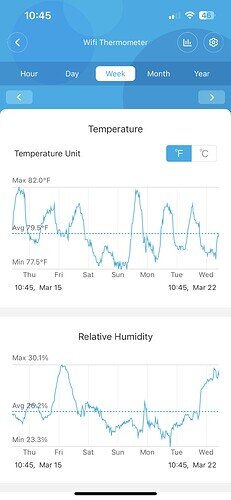So just thought I’d come back to this post as I finally ended up getting something set up after talking with Dion at Herpstat. He helped me better understand why they don’t make a high-power model anymore. Quote from his email for anyone wondering how they work, if they didn’t already (was nice to get this detailed of a response, great customer service from him)
"I had a Herpstat HP and Herpstat HP version 2 for those. I discontinued them a couple of years ago.
With any relay based thermostat the contacts of the relay will have a spark when the power is disengaged. Because of that the contacts wear out over time. This means the thermostat is like a hour glass counting down until it can no longer hold the high current. Which is fine as long as you recognize this and understand you will be replacing the thermostat in a few years.
I did months of testing different relays and found some high quality ones that would extend the life by 2-3 times a normal relay. I also used additional voltage tracking to try to disengage the relay when the electrical sinewave was at it lowest voltage. This made a huge difference and in my tests I squeezed another 2-3 times of life out of the relay. So there were several good advancements for that product and it originally released at around $150.
The problem is when there are other alternatives out there for less money people jump to those. I cut some pricing down to around $125 but any lower and it wasn’t worth our time to build them.
Overall, the product just no longer made sense to keep in the product lineup. High liability, low profit, low sales."
Then he pointed me towards the Inkbird C206T, which seems like a steal for $30. I’m using that in conjunction with a Govee wifi thermometer in the room. I’ve been doing a temperature drop at night to try to see how my animals act. Might go back to a constant temp but this is just a trial to see how well it works. I’ve had it up and running for a couple weeks now and made some small tweaks, and i think i’ve got it dialed in.
Here’s the Inkbird for anyone curious: Temperature Controller C206T – INKBIRD
I appreciated the honesty from Dion that these types of controllers have the tendency to burn out faster than a different style of thermostat.
This is the Govee sensor I’m using as well. I went with this brand (I know sensor push is pretty popular in the hobby as well) due to the simplicity of already having the app for a meat thermometer for my smoker. Didn’t want to have to download more apps to deal with, already have way too many lol.
Govee Wi-Fi Smart Temperature Humidity Sensor - Indoor
Here’s a snapshot of the data from the Govee App, which I think is pretty cool. I know sensorpush does something basically the same, so just for reference for those that haven’t used it before.
You can see there’s some fluctuations with the max/min temps, but this was on my end playing with things to get it dialed in right where I wanted it. The Inkbird has an option to calibrate the thermostat, and I had to adjust it by about 1.1 degrees to be in line with the Govee sensor. Overall, $60 for the pair and I feel alot safer with the animals in my reptile room!
